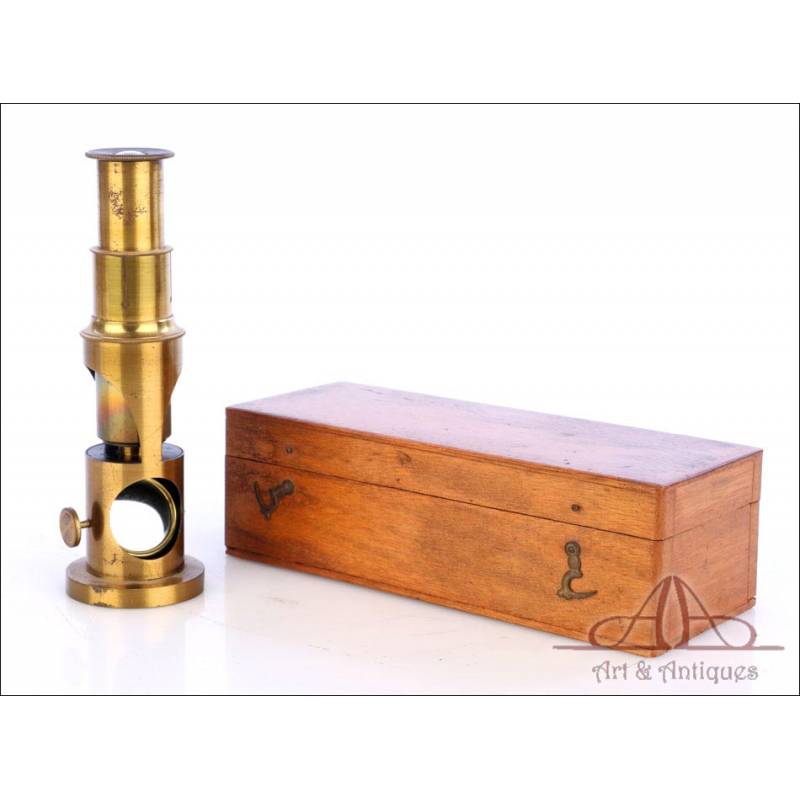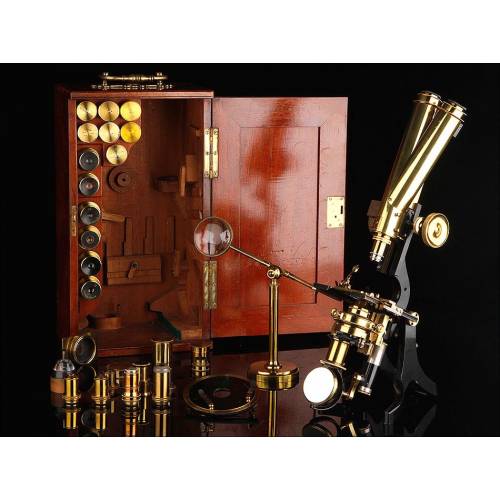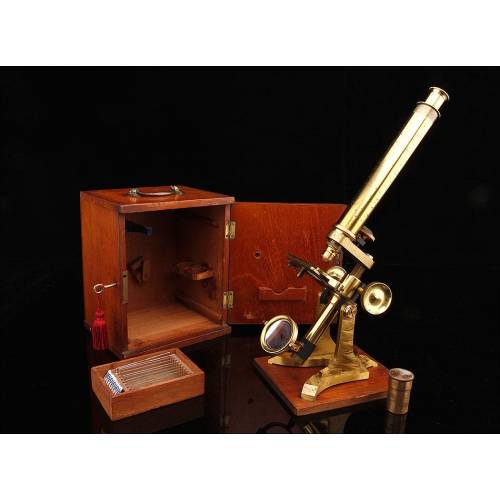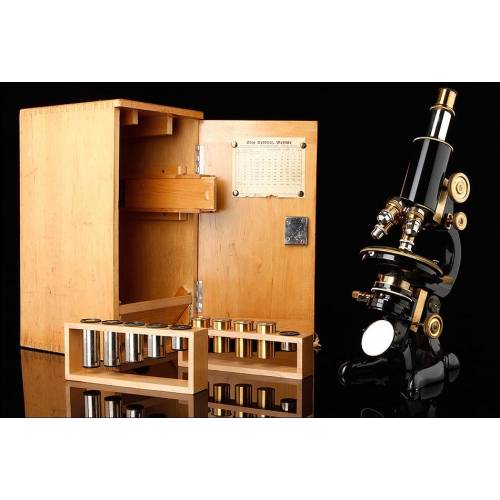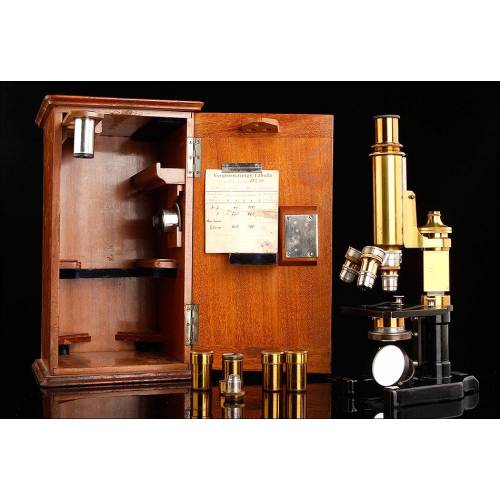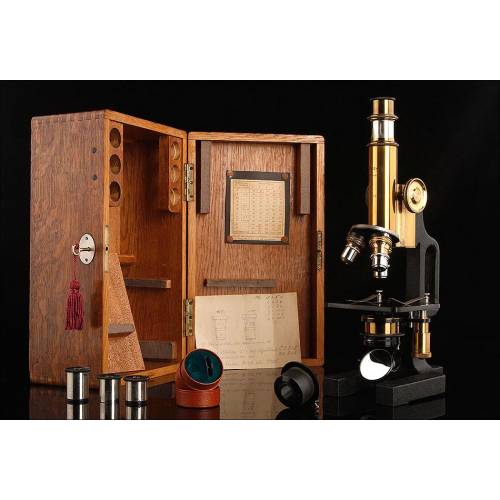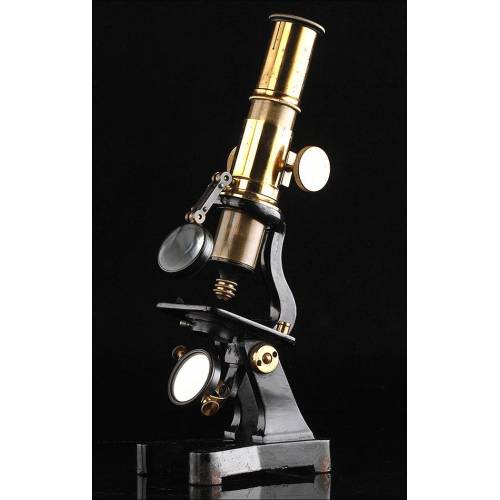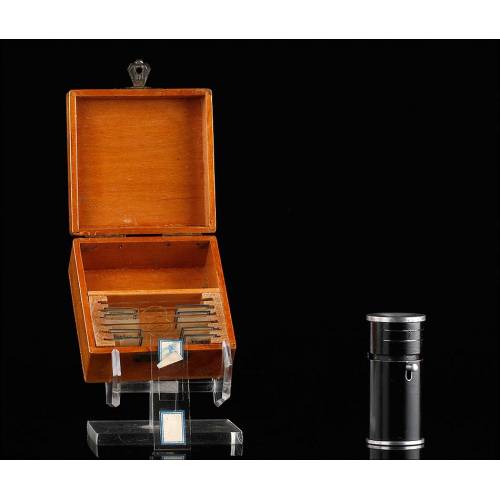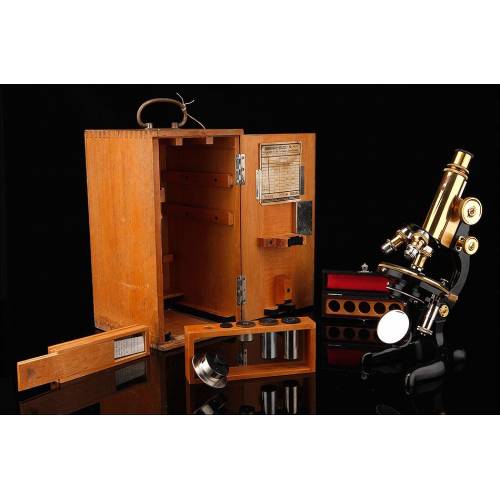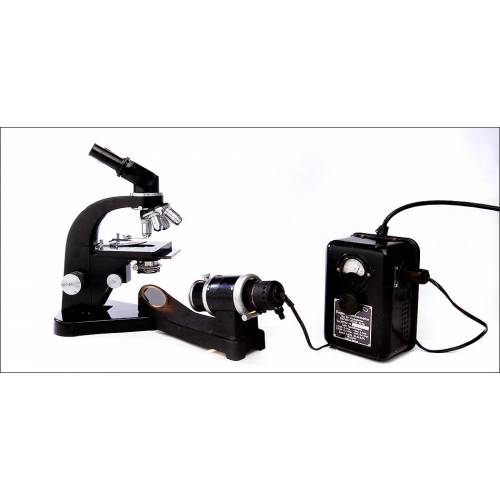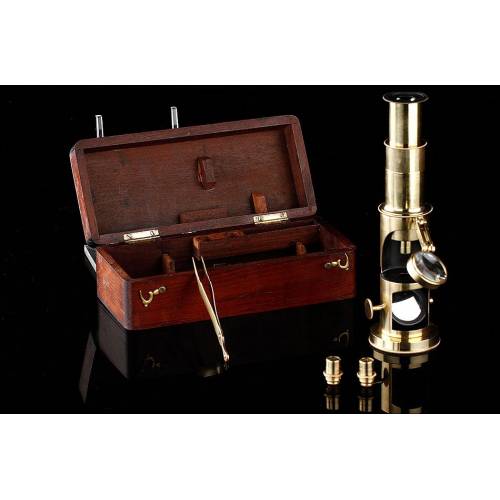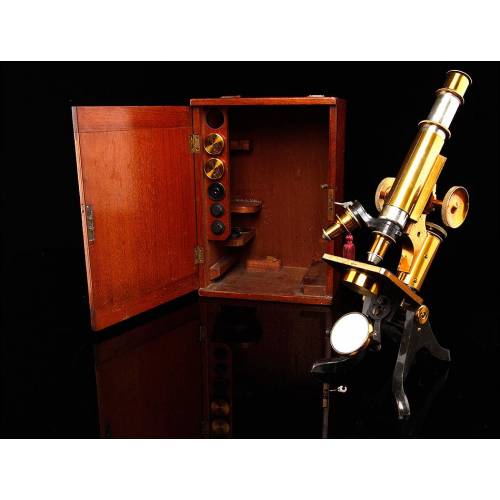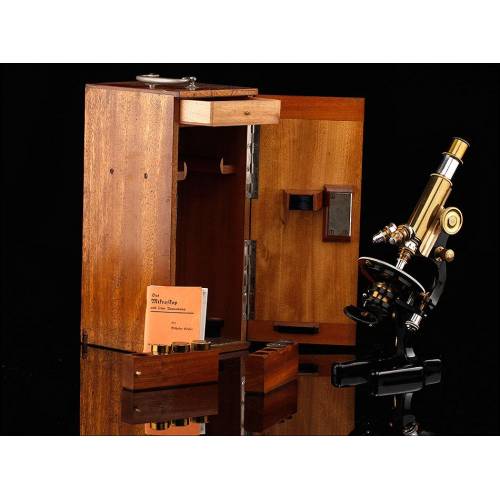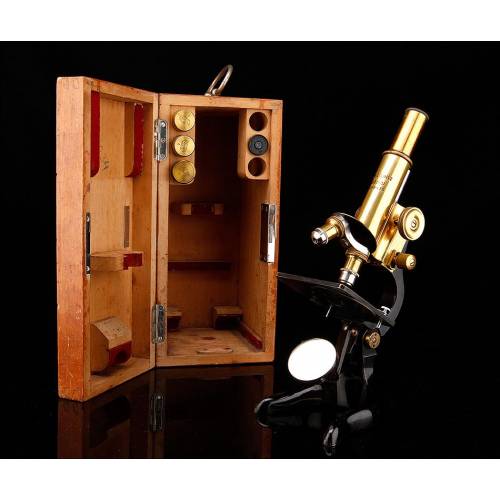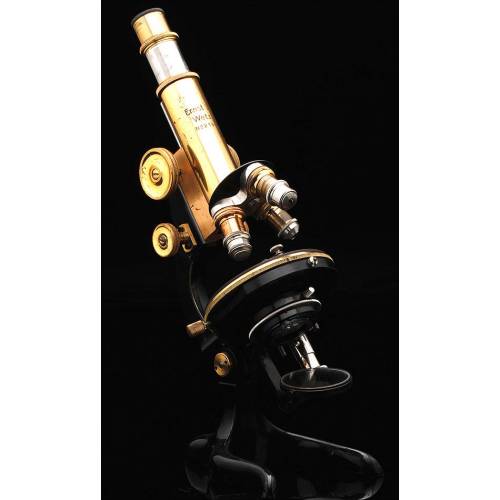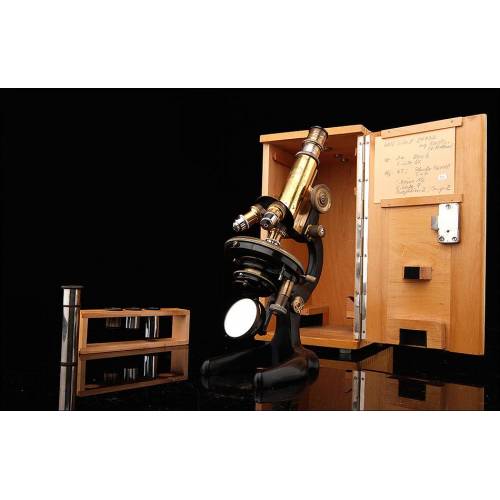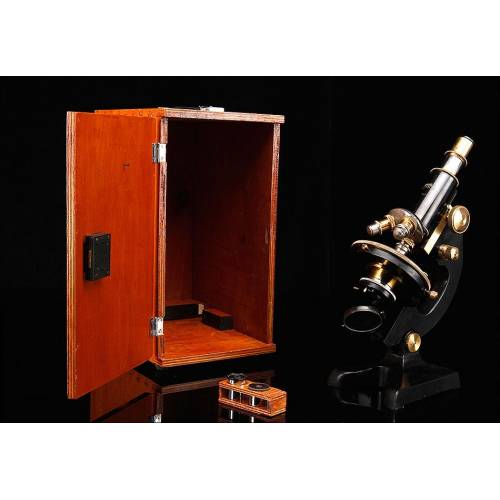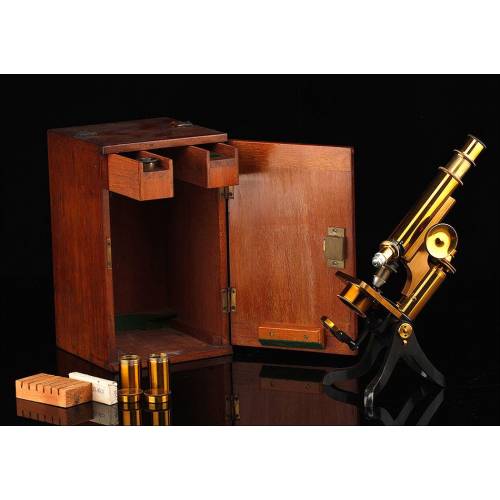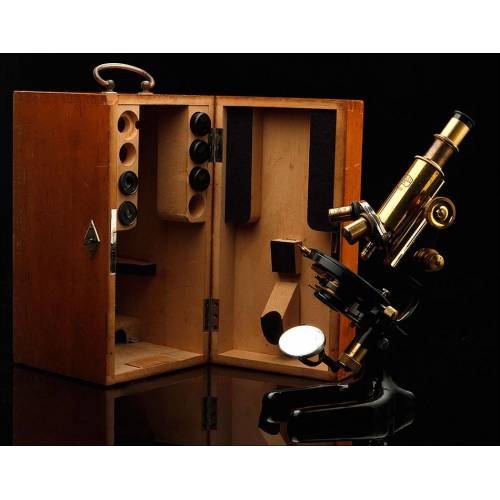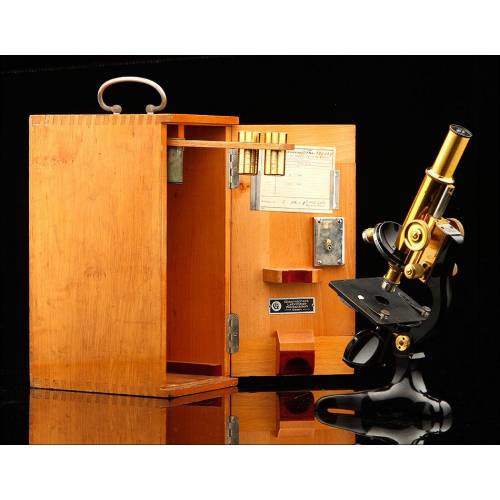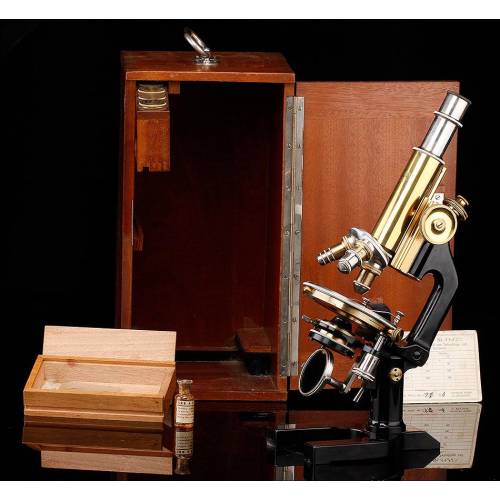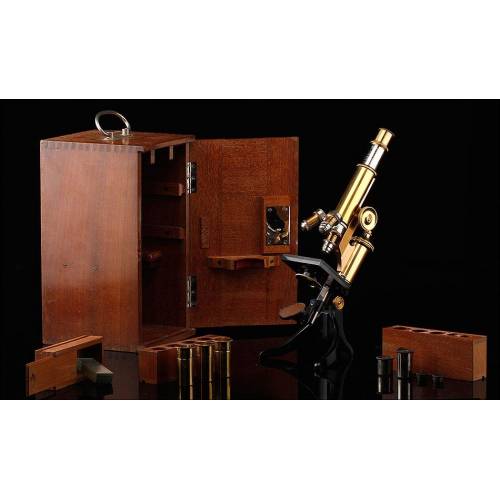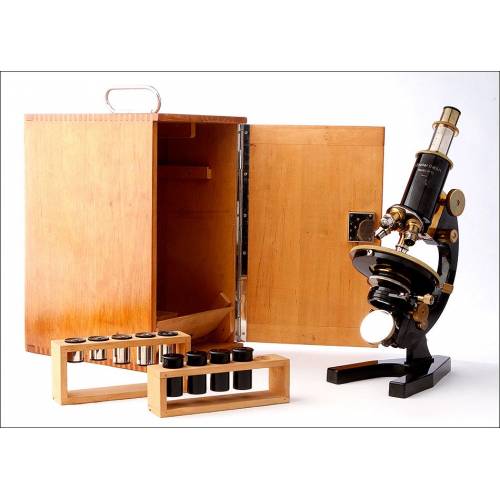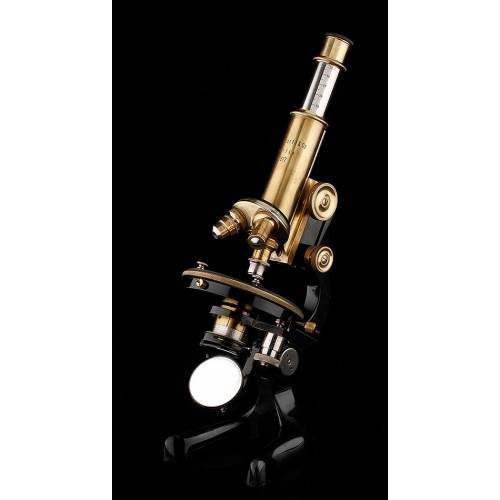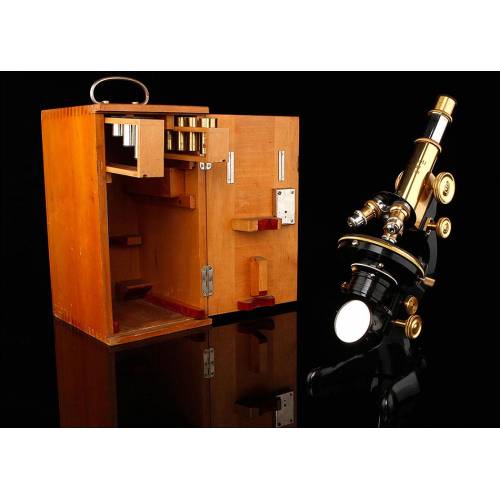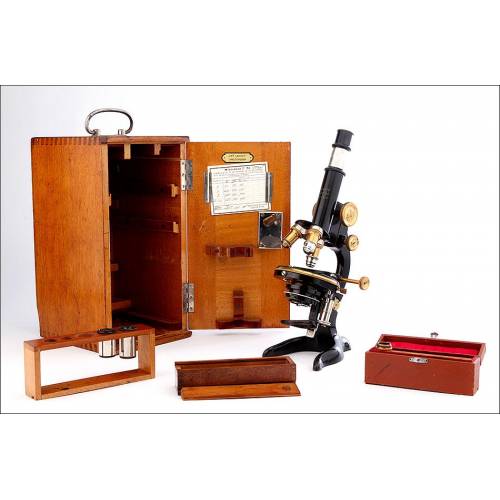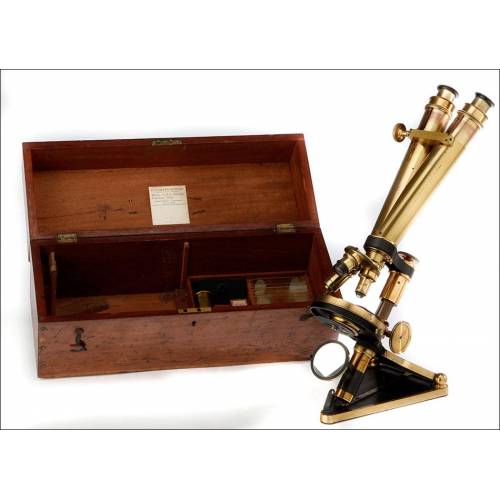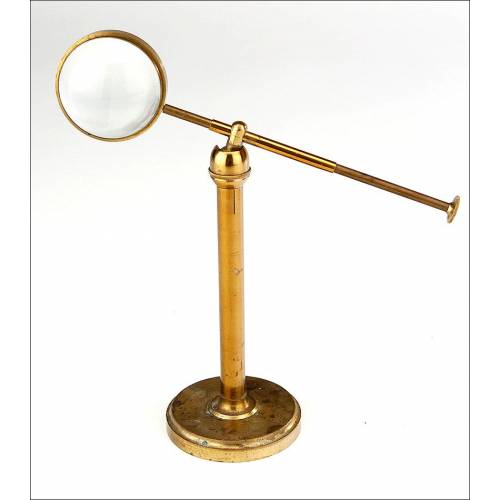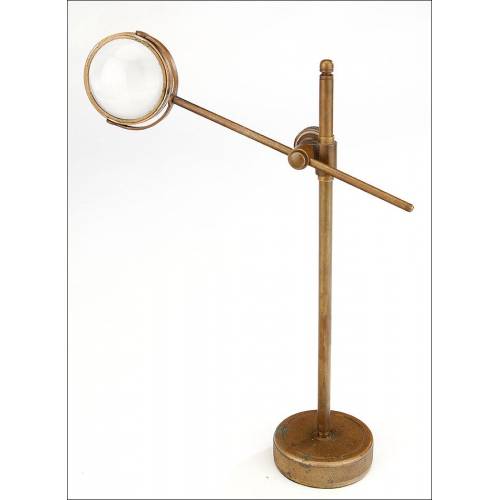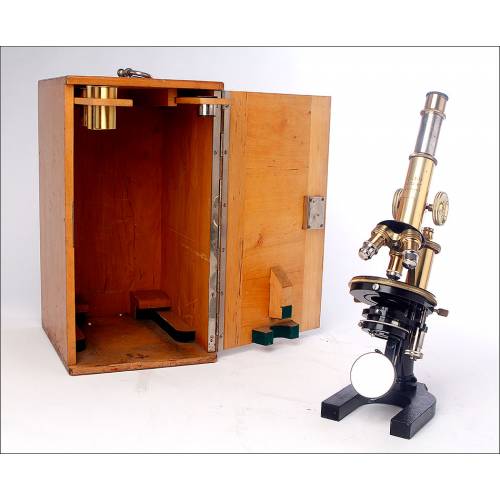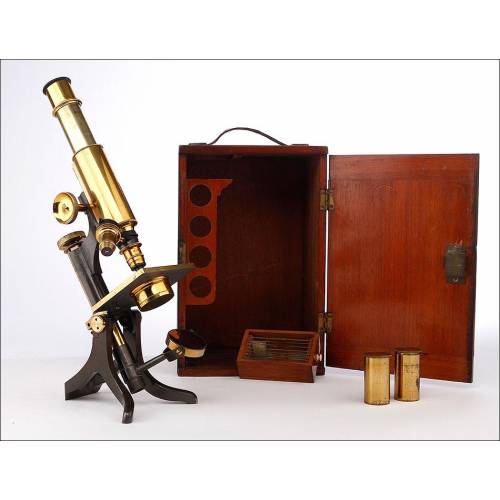D-509
Small French Drum Microscope. Circa 1890
Antique small drum microscope in good condition. Original eyepiece and lens. Mahogany case.
Sold!
Small French drum microscope made circa 1890, in its original mahogany case and in fine condition. The microscope preserves all its component parts, from the turret with the eyepiece to the double-sided mirror designed to catch the light and throw it on the sample. The brass the parts are made of is finely preserved and keeps the original finish, a protecting transparent lacquer which provides the metal with a beautiful and charming patina. In some places we can appreciate slight signs of the trace of time, almost imperceptible details which testify for the authenticity and the use of this fascinating device. The microscope comes in a solid mahogany case with original locking hooks and inner wooden pieces bound to maintain the device in its place. Delicate and fascinating, this small French drum microscope deserves a very special place in a good collection of antique scientific instruments. Dimensions: 1.8 in / 4.5 cm. Height: 6.3 in / 16 cm.Drum Microscopes History Drum microscopes are an evolution of pocket or travel microscopes. They were invented by the English mathematician and optic material manufacturer Benjamin Martin who made the first model in 1738. This instrument was made of wood, brass and cardboard. A drum microscope is composed of a cylinder which slides inside a pipe in order to focus the specimen or sample through the instruments lens. The specimen receives the light reflected by the oscillating mirror located at the bottom of the microscope. For their easy operation and small size, drum microscopes became quite popular and were produced for around two centuries with scarcely any modifications of the original design. Cheap and affordable, they were highly appreciated by students.

